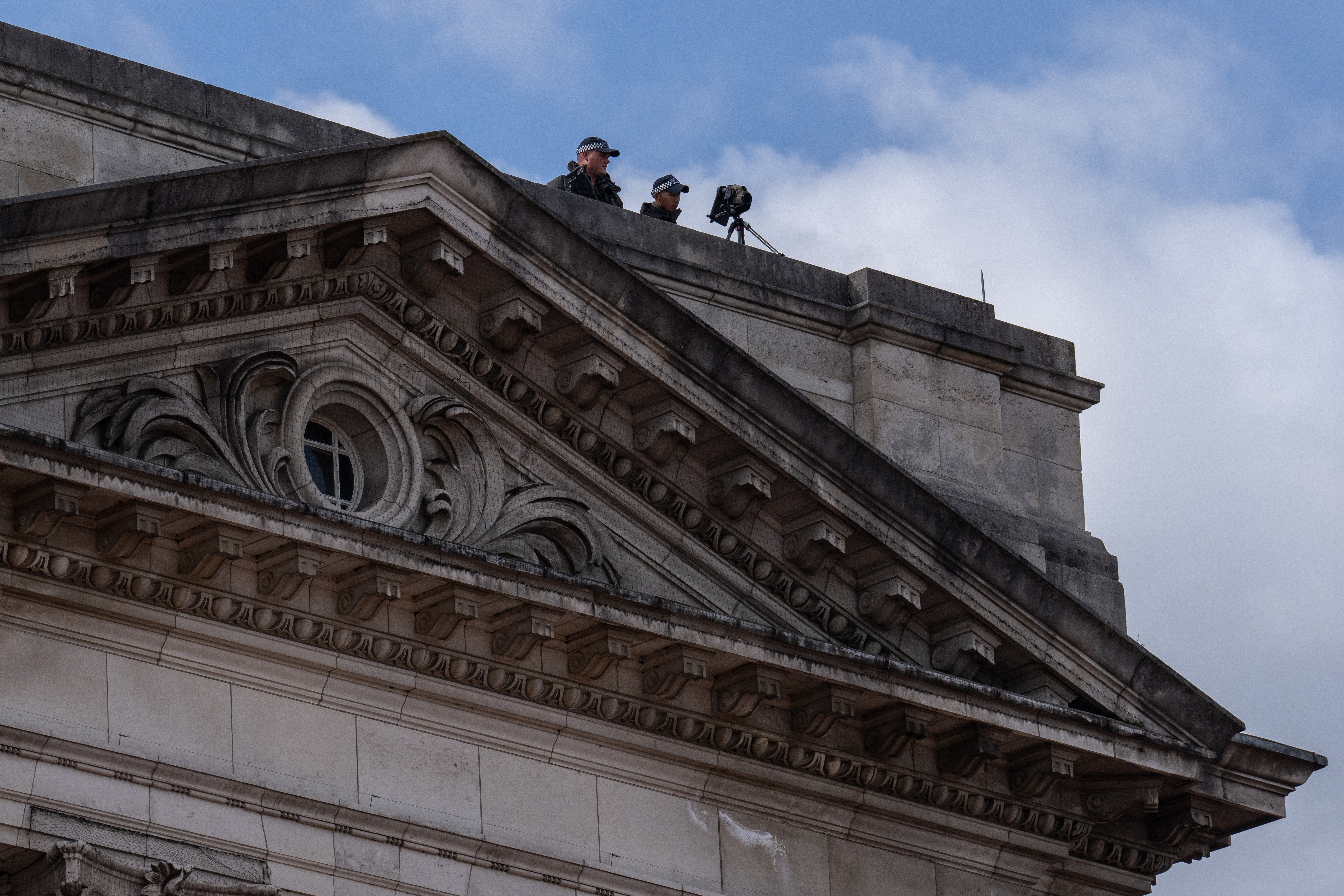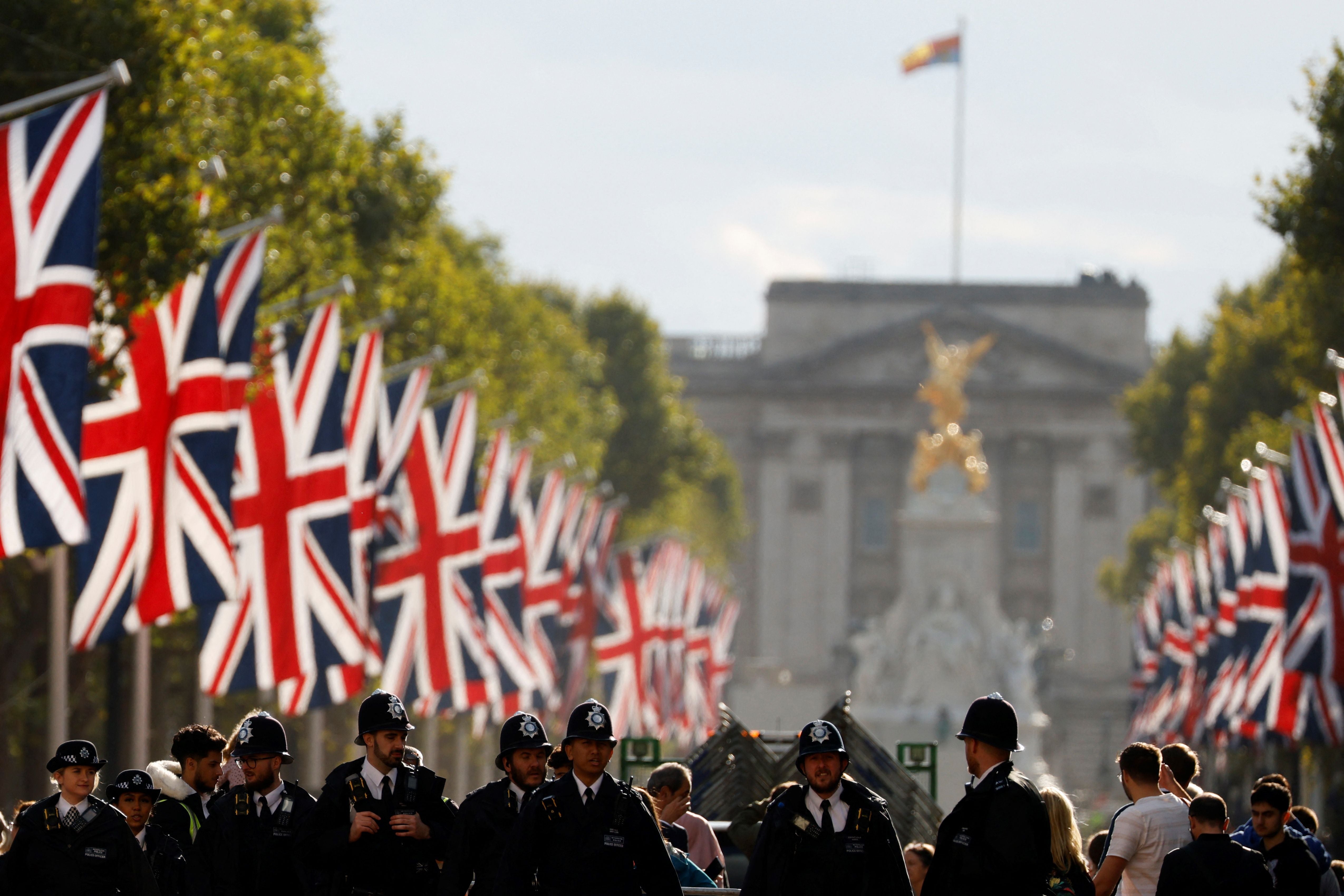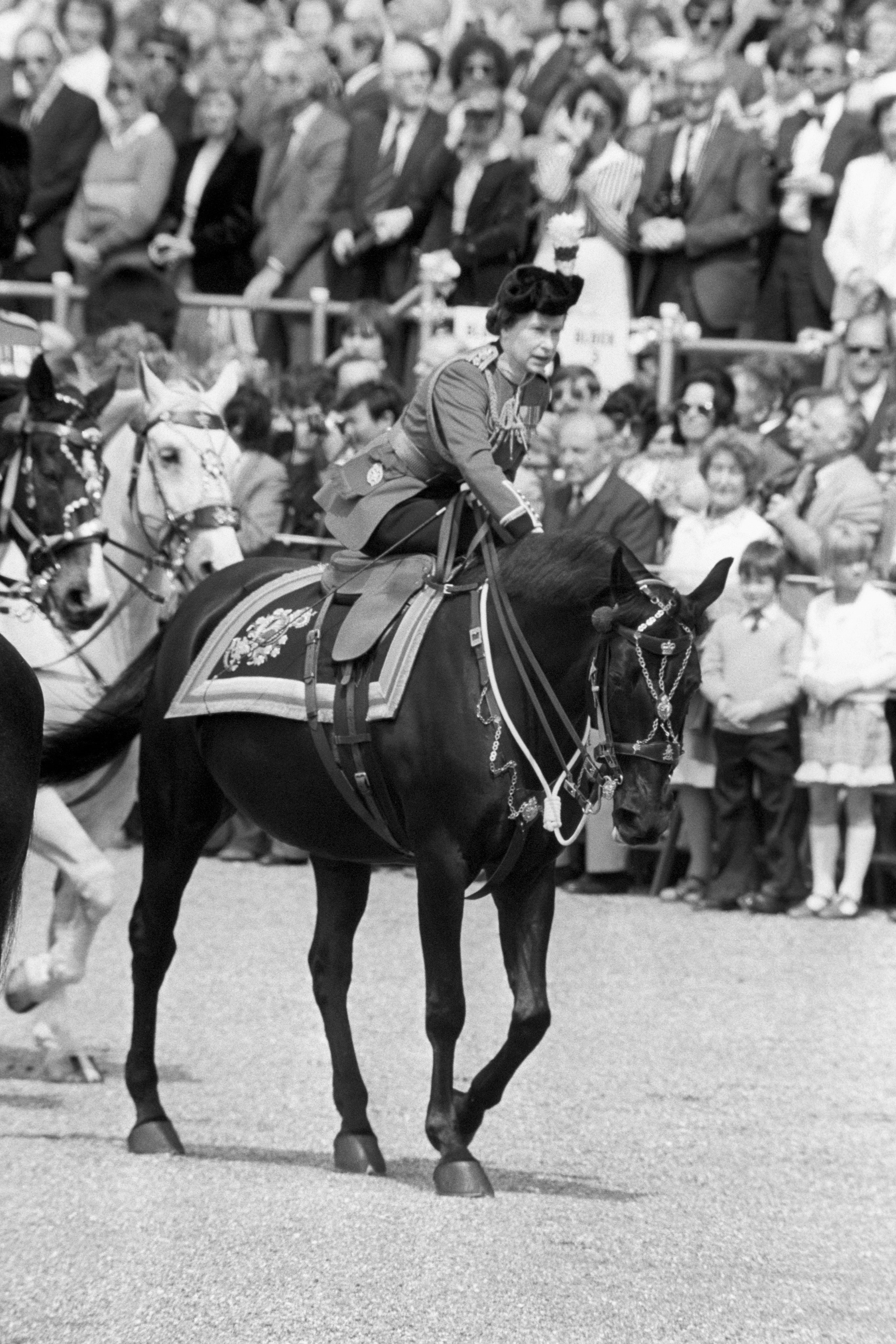Police snipers on roofs along Queen’s funeral route as Met Police stage largest ever operation
“This will be the largest single policing event that the Met Police has undertaken,” said deputy assistant commissioner

Your support helps us to tell the story
From reproductive rights to climate change to Big Tech, The Independent is on the ground when the story is developing. Whether it's investigating the financials of Elon Musk's pro-Trump PAC or producing our latest documentary, 'The A Word', which shines a light on the American women fighting for reproductive rights, we know how important it is to parse out the facts from the messaging.
At such a critical moment in US history, we need reporters on the ground. Your donation allows us to keep sending journalists to speak to both sides of the story.
The Independent is trusted by Americans across the entire political spectrum. And unlike many other quality news outlets, we choose not to lock Americans out of our reporting and analysis with paywalls. We believe quality journalism should be available to everyone, paid for by those who can afford it.
Your support makes all the difference.Police snipers have been spotted on a roof in Westminster during Queen Elizabeth II’s funeral.
The Metropolitan Police had at least 10,000 officers patrolling the streets of the city for what is being regarded as the UK’s biggest ever security operation.
The gunmen were spotted on top of a building on Parliament Street, next to Westminster underground station as around two million mourners visited the capital for the state funeral.
As well as snipers, the Met enlisted armed police, motorbike escort riders, dog teams, marine units and helicopters as a part of their efforts to keep members of the public safe during the historic event.
Stuart Cundy, deputy assistant commissioner at the Metropolitan Police, said on Saturday: “This will be the largest single policing event that the Met Police has undertaken, larger than the 2012 Olympics, larger than the platinum jubilee weekend.
“Our contingency planning considers a whole range of scenarios including terror attacks, criminal activity and crowd surging,” he added.

Following backlash about anti-monarchy protesters being arrested, Mr Cundy said “we will only take action where it is absolutely necessary”.
Royal occasions often pose security risks, such as in 1981 when a 17-year-old man fired shots at the Queen.
Marcus Sarjeant fired six blank cartridges at the monarch as she rode past crowds on horseback during the Trooping the Colour ceremony in central London.

While the shots startled the Queen’s horse, she was able to bring it back under control within a few seconds and the man was apprehended.
He was later sentenced to three years in prison at HMP Grendon Underwood until 1982, when he was released aged 20.
Upon release, he changed his name and began a new life. He also wrote to the Queen to apologise for the incident but received no reply.
Join our commenting forum
Join thought-provoking conversations, follow other Independent readers and see their replies
Comments